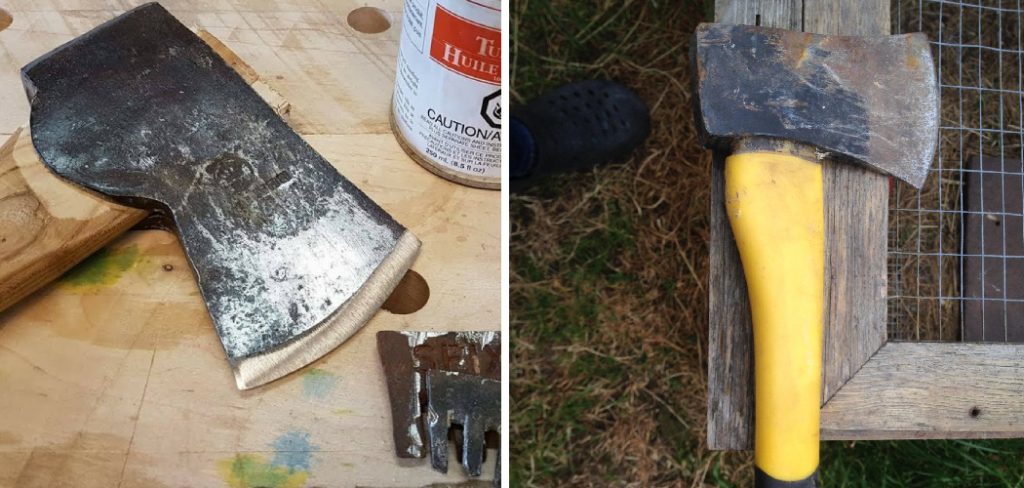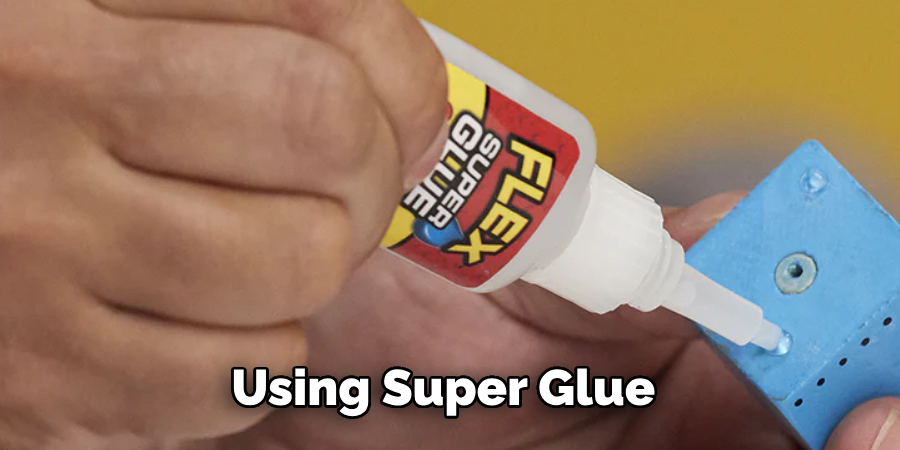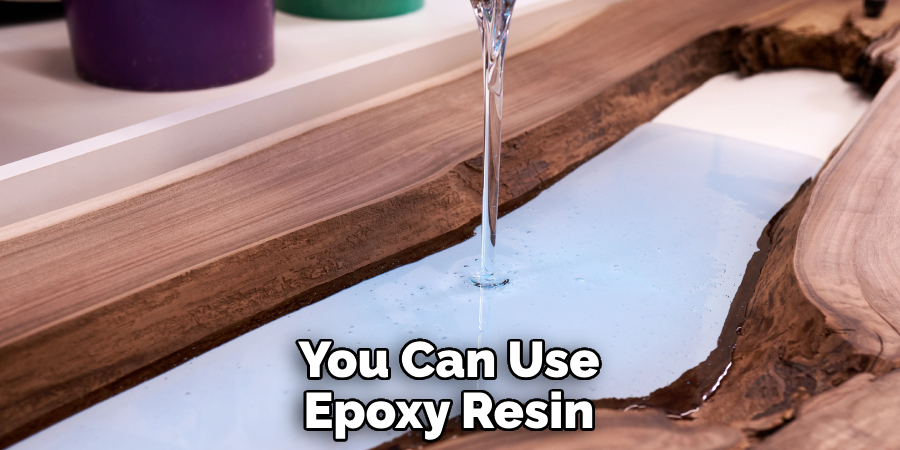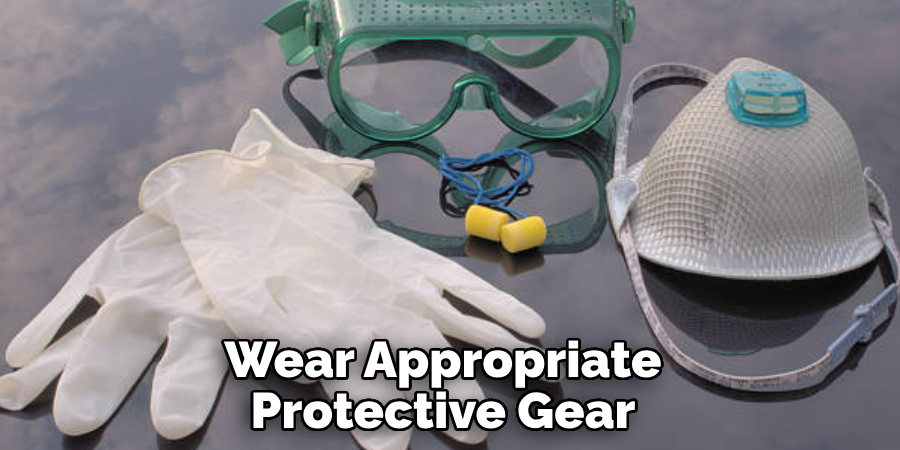Do you have an axe head that keeps coming loose? Whether it’s your trusty camping tool or a professional instrument, such mishaps can be incredibly frustrating as they prevent you from doing simple tasks. But thanks to some preventive maintenance and easy DIY steps, staying on top of fixing a loose axe head can be easier than you think!

In this blog post, we will help you understand which common causes lead to the issue and how to successfully secure it back into place so you can get back to tackling all those odd jobs with ease! Read on for our guide on how to fix a loose axe head!
What Causes a Loose Axe Head?
1 . Usage
One of the main reasons for a loose axe head is improper usage. Axes are designed to be used on wood and only on wood. Using an axe on other materials such as metal or concrete can cause damage to the axe head and loosen it over time.
2 . Wear and Tear
Another common cause for a loose axe head is wear and tear. Over time, the constant impact of the axe against wood can cause it to loosen. This is especially true if the axe head is not securely attached in the first place.
3 . Moisture
Moisture can also play a role in causing a loose axe head. If an axe is exposed to moisture for long periods of time, it can cause rust and weaken the connection between the axe head and handle. This can lead to a loose axe head.
4 . Age
As with any tool, age can also be a factor in causing a loose axe head. With repeated use and exposure to various elements, the materials that hold the axe head in place may weaken over time. Also, if the axe handle is made of wood, it can shrink or expand with changes in humidity, causing the connection to loosen.
How to Fix a Loose Axe Head in 5 Easy Steps
Step 1: Gather Your Tools
Before you start fixing your loose axe head, make sure you have all the necessary tools. You’ll need a hammer, pliers or wrench, sandpaper, and some wood glue. These can be found at any hardware store.

Step 2: Remove the Axe Head
Using a pair of pliers or a wrench, carefully loosen and remove the screws or nails holding the axe head in place. Once they are removed, gently pry the axe head off of the handle. This will expose the wooden handle and the metal wedge that holds the head in place.
Step 3: Clean and Sand
With the axe head removed, now is a good time to clean any dirt, rust or debris off of both the head and the handle. Use sandpaper to remove any rough patches or splinters on the handle, making sure it is smooth and clean. This will ensure a better bond between the head and the handle.
Step 4: Apply Glue
Apply a generous amount of wood glue to both the inside of the axe head and the end of the handle. Make sure to cover all surfaces evenly, as this will help with a stronger bond. Place the metal wedge back into its original position on top of the glue.
Step 5: Reattach Axe Head
Carefully place the axe head back onto the handle, making sure to align it properly. Use a hammer to gently tap the head into place and secure it tightly. Wipe off any excess glue that may have squeezed out around the edges. Let the glue dry for at least 24 hours before using your axe again.
Some Extra Tips to Fix a Loose Axe Head
1 . Do Not Use Superglue
It may seem like a quick fix, but using super glue to fix a loose axe head is not recommended. The chemicals in the glue can weaken the wood and make it more prone to breaking. It also makes it difficult to remove the axe head if you need to replace it in the future.

2 . Check for Cracks or Damage
Before attempting to fix a loose axe head, inspect it thoroughly for any cracks or damage. If there are any visible cracks, it is best to replace the entire axe instead of trying to fix it. Using a damaged axe can be dangerous and ineffective.
3 . Use Wooden Wedges
The most common and effective method to fix a loose axe head is by using wooden wedges. First, remove the axe head from the handle and clean any debris or dirt. Then, place a wooden wedge on each side of the handle and tap them in gently with a hammer until they are snug.
4 . Use Metal Wedges (As a Last Resort)
If wooden wedges do not work, you can try using metal wedges as a last resort. Metal wedges can be made from old hacksaw blades or other sturdy metal pieces. Place them on either side of the handle and tap them in with a hammer until they are secure.
5 . Use Epoxy Resin
If the wooden or metal wedges do not work, you can use epoxy resin to fix a loose axe head. First, mix the resin according to the manufacturer’s instructions and apply it on the handle and inside the axe head. Then, fit the head back onto the handle and secure it with clamps until the resin sets.

6 . Consider a Professional
If none of these methods work or if you are not confident in your ability to fix a loose axe head, consider taking it to a professional for repairs. They will have the necessary expertise and tools to fix the issue safely and effectively.
7 . Regular Maintenance
Prevention is key when it comes to fixing a loose axe head. Make sure to regularly check and maintain your axe, tightening any loose heads or handles as needed. This will not only prevent accidents but also prolong the lifespan of your equipment.
Frequently Asked Question
What Precautions Should I Take When Fixing a Loose Axe Head?
When fixing a loose axe head, it’s important to take the following precautions:
- Wear appropriate protective gear, including safety glasses and work gloves.
- Choose a safe and stable work surface.
- Use the right tools for the job, such as a hammer and an axe wedge.
- Ensure that the wedge is secure before using the axe again.
- Follow safety guidelines and instructions provided by the manufacturer.
How Do I Know If My Axe Head is Loose?
If your axe head is loose, you may notice it wobbling when in use. You may also be able to physically move the head with your hands. Additionally, if you hear an unusual sound or feel a vibration when using the axe, this could also be a sign of a loose head. It’s important to inspect your axe regularly and fix any issues before using it.
Can I Fix a Loose Axe Head Myself?
Yes, you can fix a loose axe head yourself as long as you have the necessary tools and follow proper safety precautions. However, if you are unsure or uncomfortable with fixing it yourself, it’s always best to seek professional help.
What If I Can’t Tighten the Axe Head Using an Axe Wedge?
If an axe wedge is not enough to tighten the head, you may need to use a metal shim or epoxy glue. However, if the head cannot be secured using these methods, it may be time to replace the axe altogether.

How Often Should I Check for a Loose Axe Head?
It’s important to regularly inspect and maintain your axe, especially before each use. This includes checking for a loose head, a worn handle, and any other potential issues. By regularly checking your axe, you can prevent accidents and ensure optimal performance.
How Much Does it Cost to Fix a Loose Axe Head?
The cost of fixing a loose axe head will vary depending on the method used and whether you do it yourself or seek professional help. Using an axe wedge is generally the most affordable option, while using metal shims or epoxy glue may cost more.
Can I Prevent My Axe Head From Becoming Loose?
Yes, there are steps you can take to prevent your axe head from becoming loose:
- Regularly inspect and maintain your axe.
- Use an axe wedge when necessary.
- Avoid over-striking or hitting the handle against hard surfaces.
- Store your axe in a dry place away from extreme temperatures and humidity.
By taking these precautions, you can prolong the life of your axe and avoid potential injuries. Overall, fixing a loose axe head is a simple and necessary task to ensure the safety and effectiveness of your tool. With proper care and maintenance, your trusty axe will last for years to come.
Can I Use the Axe Before Letting the Glue Dry for 24 Hours?
No, it is not recommended to use the axe before letting the glue dry for at least 24 hours. Using it too soon may cause the head to become loose again or compromise the strength of the bond between the handle and head. It’s important to be patient and let the glue fully set before using the axe again. So, it is always better to check for any loose axe head beforehand and fix it properly before use.
Is It Necessary to Replace the Axe If the Head is Loose?
In most cases, it is not necessary to replace the entire axe if the head becomes loose. By following the steps outlined in this guide, you can easily fix a loose axe head and continue using your trusted tool. However, if your axe is old or damaged beyond repair, it may be best to invest in a new one for optimal safety and performance.

Always prioritize your safety when using any tool, and take necessary precautions to prevent accidents. With these tips and guidelines, you can easily fix a loose axe head and ensure the longevity of your trusty axe. Also, regularly inspect and maintain your axe to catch any potential issues before they become major problems. Remember, a well-maintained axe is a safe and effective tool.
Conclusion
Knowing how to fix a loose axe head is an important skill for any woodworker or outdoors enthusiast. By following these tips and taking good care of your axe, you can ensure that it remains a reliable tool for years to come. Remember, safety should always be the top priority when handling sharp tools like axes.
Also, if you have any doubts or concerns about fixing a loose axe head, do not hesitate to seek professional help. It is always better to be safe than sorry when it comes to handling potentially dangerous equipment.
